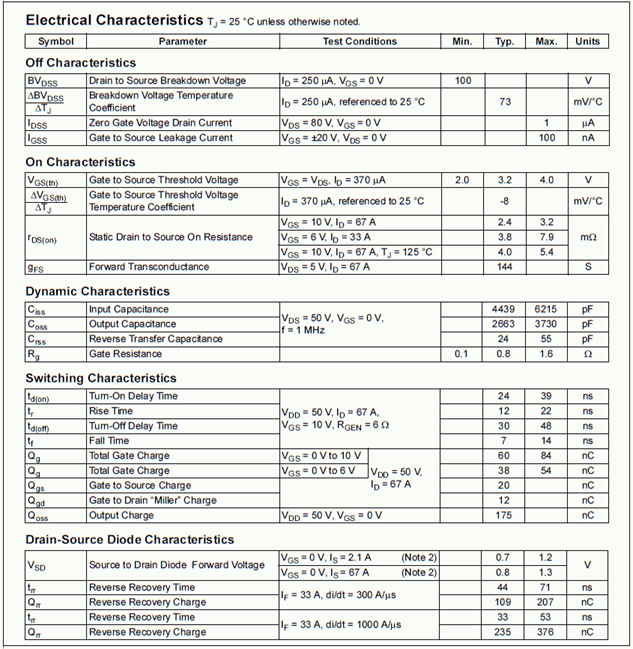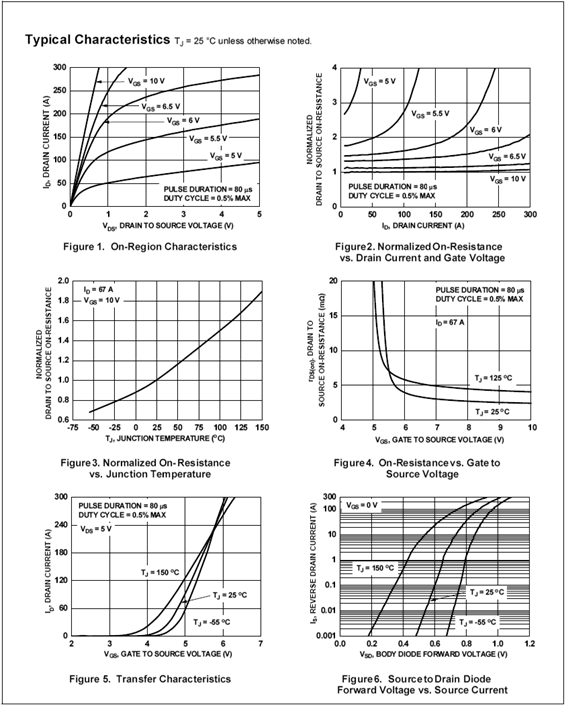12.5: E-MOSFET Data Sheet Interpretation
- Page ID
- 25330
A data sheet for an E-MOSFET, the FDMS86180, is shown in Figure \(\PageIndex{1}\). This is an N-channel, high power device using trench construction.

Figure \(\PageIndex{1a}\) : FDMS86180 data sheet. Used with permission from SCILLC dba ON Semiconductor.
One of the first things that might jump out is the “100% RoHS Compliant” green leaf logo in the upper center, meaning that the device meets the Restriction of Hazardous Substances directive. The device comes in the flat, multi-pin Power 56 package and features an \(r_{DS(on)}\) of just a few milliohms. Continuous current capability at room temperature is 151 amps with a pulsed current maximum of 775 amps. In Figure \(\PageIndex{1b}\) we find a breakdown voltage of 100 volts and an \(I_{DSS}\) of only 1 \(\mu\)A. Recall that this is a normally off device, and thus \(I_{DSS}\) represents a leakage current. Continuing, \(V_{GS(th)}\) varies between 2.0 and 4.0 volts, with 3.2 volts being typical. The forward transconductance, \(g_m\) (here referred to as \(g_{FS}\)) is 144 siemens at a drain current of 67 amps. This is orders of magnitude greater than what we might see with small signal devices. Turn-on and turn-off times are measured in the tens of nanoseconds, verifying the high speed switching ability of the device.

Figure \(\PageIndex{1b}\) : FDMS86180 data sheet (cont).
A series of performance graphs are found in Figure \(\PageIndex{1c}\). In the upper left is a section of drain curves showing the ohmic region through \(V_{DS} = 5\) V. The plot directly below this shows the increase in \(r_{DS(on)}\) as temperature rises. There is about a three-fold variation across the temperature range. At lower left is the characteristic curve variation. Note that the curves are less steep as temperature increases, showing a decrease in \(g_m\) and thus, verifying a negative temperature coefficient of transconductance.

Figure \(\PageIndex{1c}\) : FDMS86180 data sheet (cont).


